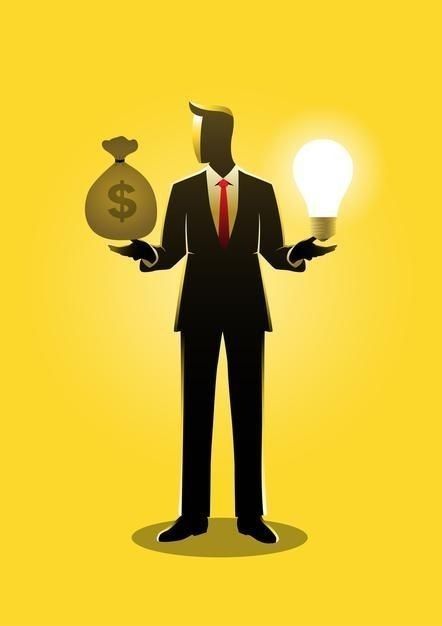Introduction: Understanding the World of Bids
In our everyday lives—whether in business, government contracts, online shopping, or even relationships—we often make bids without realizing it. A bid is essentially an offer or proposal made with the intention of achieving something in return. While most people associate bids with auctions, tenders, and contracts, the concept of bidding runs much deeper. From ancient markets to today’s digital ad platforms, bid types have shaped economies, negotiations, and even personal interactions.
- 📜 History of Bids
- 📊 Types of Bids
- 1. Open Bid (Public Auction)
- 2. Sealed Bid
- 3. Reserve Bid
- 4. Dutch Auction (Descending Bid)
- 5. Reverse Bid (Reverse Auction)
- 6. Dynamic/Online Bids
- 7. Symbolic or Emotional Bids (Life-related)
- 📌 Important Facts About Bids
- 📅 Timeline of Bidding Evolution
- 🌍 Significance of Bids
- 🙏 Wishing Around Bids
- ⭐ Importance in Daily Life
- 👥 Importance to Society
- ❓ FAQs About Bids
- 🎯 Conclusion: The Hidden Power of Bids in Life
In this article, we will dive deep into different bid types, their history, facts, timeline, importance, and how they impact daily life and society. You’ll also discover why understanding bids can help you make smarter financial, professional, and personal decisions.
📜 History of Bids
The practice of bidding is as old as human trade. Let’s walk through the timeline of how it evolved:
Ancient Markets (500 BCE – 200 CE): In early civilizations such as Greece and Rome, merchants often called out offers, and buyers competed by making higher bids. Auctions were a common way of selling war spoils, slaves, and luxury items.
Middle Ages (5th – 15th Century): Auctions became institutionalized. In Europe, artwork, property, and livestock were often sold to the highest bidder.
17th Century: The first documented stock exchange auction happened in Amsterdam, where shares of the Dutch East India Company were sold through a bidding process.
18th–19th Century: Auctions spread globally for goods, real estate, and contracts. Governments used tenders (a form of sealed bidding) to allocate projects and licenses.
20th Century: With industrial growth, competitive bidding became standard for large projects, especially in construction and government procurement.
21st Century: Online platforms like eBay, Google Ads, and Amazon introduced digital bidding systems, making the concept universal—from buying collectibles to advertising to securing cloud contracts.
📊 Types of Bids
Here are 7 powerful bid types you must know:
1. Open Bid (Public Auction)
In this type, participants openly compete by raising their offers.
Example: Antique auctions or art auctions.
Impact: Transparency but can lead to emotional overspending.
2. Sealed Bid
Each bidder submits a confidential offer without knowing others’ bids.
Common in government tenders and high-value contracts.
Impact: Encourages fairness but requires trust in the system.
3. Reserve Bid
A seller sets a minimum price; unless met, the item isn’t sold.
Impact: Protects sellers from undervaluation.
4. Dutch Auction (Descending Bid)
The price starts high and decreases until someone accepts it.
Example: Dutch tulip markets, IPO pricing.
Impact: Speeds up decision-making, but buyers must act quickly.
5. Reverse Bid (Reverse Auction)
Buyers set requirements, and sellers compete by lowering prices.
Example: Procurement in industries.
Impact: Saves costs but may reduce product/service quality.
6. Dynamic/Online Bids
Used in platforms like Google Ads and Amazon Ads. Automated systems decide bid amounts based on competition and value.
Impact: Efficiency in digital marketing and e-commerce.
7. Symbolic or Emotional Bids (Life-related)
Beyond money—humans also place bids for attention, love, or trust. For example, when a child says, “Look at me!” or when a partner asks for time.
Impact: Shapes human relationships and emotional bonds.
📌 Important Facts About Bids
The earliest recorded auction dates back to 500 BCE in Babylon.
The largest auction in history was the U.S. Federal Communications Commission’s spectrum auction (2015), raising $44.9 billion.
Online bidding platforms like eBay transformed how people view second-hand goods.
Emotional bids in relationships are studied in psychology by Dr. John Gottman, who highlighted how people “bid” for emotional connection.
Companies lose or gain billions yearly based on how they design their bidding strategies.
📅 Timeline of Bidding Evolution
500 BCE: Babylonian marriage auctions.
100 CE: Roman Empire auctions for military goods.
1602: Amsterdam Stock Exchange—first share auction.
1700s: English and Dutch auction models spread worldwide.
1900s: Competitive bidding in large-scale industries.
1995: Launch of eBay, pioneering online auctions.
2000s: Rise of Google AdWords (digital bidding revolution).
2020s: AI-driven automated bids dominate global commerce.
🌍 Significance of Bids
Economic Growth: Bids create fair competition and transparent pricing.
Innovation: Companies innovate to win bids by offering better services.
Fairness: Ensures no monopoly—everyone gets a chance to participate.
Digital Economy: Online bids power advertising, e-commerce, and global trade.
Human Connection: Emotional bids strengthen relationships and trust.
🙏 Wishing Around Bids
When people participate in big auctions, tenders, or even emotional bids, they often wish for success. Some common wishes include:
“May you win the bid and grow your business.”
“Best wishes for securing the project tender.”
“May your heartfelt bid for love and trust be accepted.”
These wishes reflect hope, fairness, and positivity in society.
⭐ Importance in Daily Life
Bids are not just financial—they touch every corner of life:
In Business: Decides who gets projects, contracts, and clients.
In Shopping: Online bidding helps people get rare products.
In Relationships: Bidding for love, care, and attention keeps bonds strong.
In Government: Bids ensure fair distribution of taxpayer-funded projects.
In Career: Job interviews can be seen as a form of bidding one’s skills.
👥 Importance to Society
Encourages healthy competition.
Prevents corruption when done transparently.
Creates opportunities for small businesses.
Spreads resources fairly.
Strengthens human values when applied emotionally.
❓ FAQs About Bids
Q1. What is the difference between an auction and a bid?
A bid is an offer, while an auction is the process of collecting multiple bids.
Q2. Which bid type is best in business?
Sealed bids and reverse auctions are most common for fair pricing.
Q3. Can bids be non-financial?
Yes, emotional and symbolic bids happen in relationships and daily life.
Q4. Why do governments prefer sealed bids?
They ensure fairness, avoid favoritism, and encourage honest competition.
Q5. What role does technology play in bidding today?
AI and algorithms now automate bidding, especially in advertising and e-commerce.
🎯 Conclusion: The Hidden Power of Bids in Life
Bids are much more than numbers on a contract or clicks on an ad—they are symbols of desire, effort, and opportunity. From the earliest Babylonian auctions to today’s AI-driven systems, bidding has shaped how humans exchange value.
In society, financial bids drive economic progress, while emotional bids drive human connection. If we recognize and respond to both wisely, we not only succeed in business but also nurture healthier relationships.
So the next time you place a bid—whether in a meeting, an auction, or even in a conversation with a loved one—remember that bids carry the power to shape destinies.








